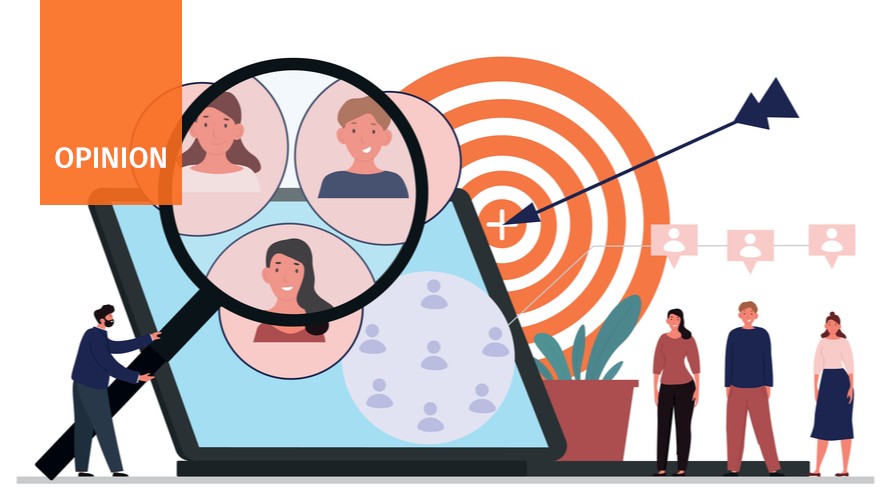It’s already fairly challenging for marketers to foster meaningful engagement with customers, and this is becoming increasingly arduous with the loss of third-party data.
Understanding how to tailor marketing efforts to suit different types of customers is obviously key, but before you can get started on this, it’s important to understand the differences between segmentation and personalisation.
Although a lot of advertisers and publishers swap out the words personalisation and segmentation for one another, they don’t mean the same thing. The strategies are actually completely different, so here is your simple guide to understand each of them and how they work in relation to one another:
Let’s start with Segmentation
Segmentation, or segmentation targeting, is absolutely key within marketing strategies. It involves grouping consumers into segments based on different characteristics which can be used to determine the most effective way to advertise.
Customers can be grouped according to a multitude of factors – here are a few common examples:
- Geographic segmentation: Grouping customers based on their location in the world, a country or a region, depending on how local the available data is
- Behavioural segmentation: Grouping customers based on their habits, for example how much money they usually spend, how many items they usually purchase at once, or browsing history
- Demographic segmentation: Grouping customers based on personal characteristics, for instance marital status, age, gender identity or occupation
- Device or technology segmentation: Grouping customers based on the device they are using to browse, the internet browser or software they are using
- Psychographic segmentation: Marketers can gather and collate findings about users personality traits, online habits, interests and hobbies and ways of receiving information
It’s usually advised that segmentation is implemented at the beginning of a campaign. This means advertisers can start grouping consumers into these segments from the start, meaning as the campaign progresses, marketing efforts can be more effective as marketers can focus on meeting various needs.
As well as obviously driving more successful campaigns, segmentation can also be a really pleasant way of finding out about your customers and getting to know them on a deeper level to ensure your brand is meeting their needs. For example, if you discover that a large portion of your customers are passionate about sustainability, you can make an effort to put more of a focus on your brand’s sustainability, in turn pleasing your customers and forming positive relationships.
Moving on to Personalisation
Think of personalisation as getting even more personal. This method means identifying a particular customer within a segment. For instance, you could have a customer within the skincare segment who is browsing acne treatments, and from this you can personalise your marketing efforts so this particular customer is presented with acne treatment products.
You want to be able to solve a particular customer’s particular desire. This means you need to understand a customer’s reasons for making the journey they have made to your site or product.
It can be really tricky to find out whether a customer always interacts in the same way, or if they are changing their behaviour every time they visit your site. This is why personalisation is key, as opposed to just using segmentation. It’s difficult at the moment, as we are stuck in a moment of limbo, almost, with the loss of third-party data looming but not having yet arrived, to know what type of data is going to be available for marketers. However, there are various touchpoints that shouldn’t be lost that can help with personalisation:
- Where did the customer travel to your site from?
- Which email messages are they opening, therefore are resonating with them?
- What is their current location?
These factors may change their intent, which gives you a clearer view, when you look at the picture as a whole, of the customers wants and needs.
Can the two be used together?
In order to demonstrate the difference between segmentation and personalisation clearly, here is an example:
- A skincare company is advertising through an advertisement placed on Instagram. Their advertisement shows a group of people using a range of different skincare products displaying different benefits. This, appearing on the feed of a customer who fits into the skincare segment, is segmentation.
- The same skincare company is advertising again on Instagram, however, this time, a user who has been viewing acne treatments online is presented with an image of a model with acne, using acne treating skincare. This is personalisation.
This isn’t to say that segmentation is less effective than personalisation. It can be an easier way for marketers to advertise their products, and also can deliver good results. Personalisation is simply a more specific and targeted approach.
However, the personalisation approach can mean, sometimes, that users become apprehensive about sharing their data. In this article by Yusuf Muhammad, he gave tips on finding the sweet spot of personalisation, instead of ‘creeping’ your customers out.
Segmentation and personalisation can, of course, be used together. But it is of utmost importance that marketers are aware of the difference, especially as segmentation should come first. This is because it determines the reasons you are going to market to particular customers in the first place, and makes personalisation much simpler.
